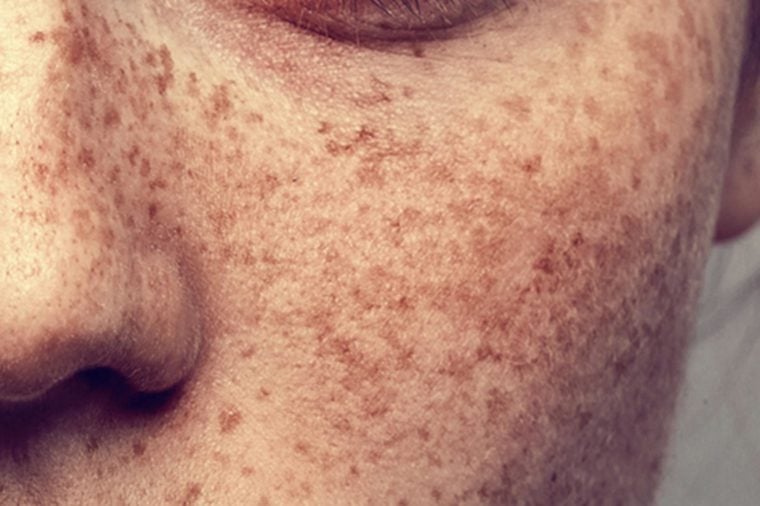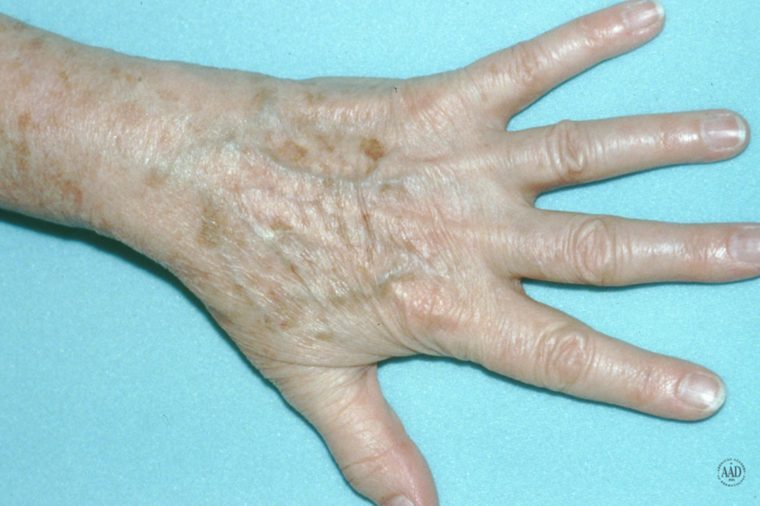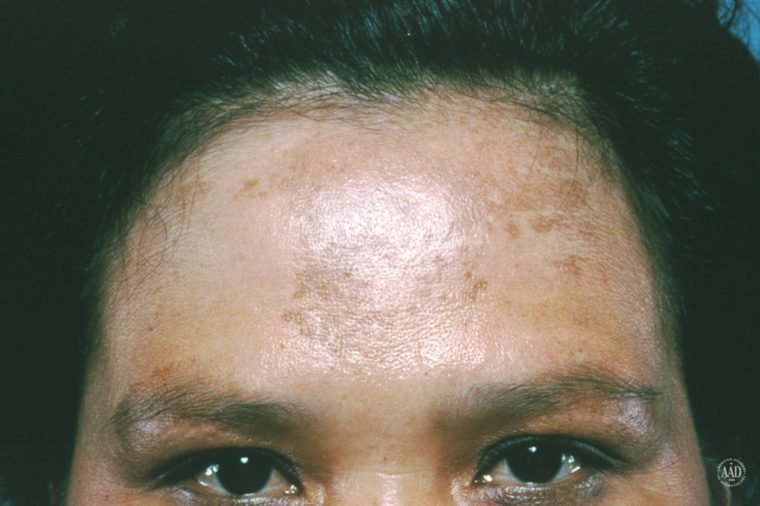All humans have some form of pigmented spotting along their skin. Whether you are born with these spots or develop them over time through aging or sun exposure it’s very important to monitor your skin and discuss any changes of your skin markings with a dermatologist. While most brown spots are harmless, some may be a sign of skin cancer.
Here’s a brief overview of the most common forms of skin spots (along with best treatment options).
FRECKLES

Freckles are tiny, flat, circular spots that are typically beige or brown in color. They typically appear in groups along areas of the skin that are regularly exposed to the sun like the face, arms, and legs. Freckles often become darker after sun exposure and significantly lighten up in the winter months. Options to get rid of freckles include topical skin care products (such as retinoid creams and vitamin C serums) and laser skin resurfacing treatments (such as Clear + Brilliant or Fraxel).
AGE SPOTS

Also referred to as sun spots or solar lentinges, age spots are flat brown spots that appear when the skin is chronically exposed to ultraviolet (UV) light, either from the sun or from tanning beds. Age spots commonly form on areas of the body that are most frequently exposed to the sun, like the face, hands, neck, décolletage, arms and legs. Treatment options for age spots include topical skin lightening products, chemical peels, laser treatments, and microdermabrasion.
MOLES

A mole is a growth on the skin that can be flesh-colored, brown, or black. Moles can appear anywhere on the skin, alone or in groups. Moles can be benign (non-cancerous) or malignant (cancerous) which is why it’s critical to monitor any moles you have for changes. We recommend monitoring the mole for changes to the ABCDE’s: Asymmetry, Border, Color, Diameter, and Evolving. For more information on skin cancer self-examination please view this print out provided by The American Academy of Dermatology. Malignant moles should be removed by an excision or Mohs surgery, and non-cancerous moles can also be surgically removed if desired by the patient.
MELASMA

Melasma is a common skin disorder that creates dark discoloration patches along the skin. Melasma generally manifests itself in a brown or gray discoloration across the cheeks, forehead, nose, chin or upper lip, and is most often uniform and symmetrical on both sides of the face. Most melasma is caused by hormonal changes within the body. Melasma can be treated with topical skin lightening treatments, chemical peels, or microdermabrasion. Laser treatments are often not recommended as laser heat can actually make melasma symptoms worse.
Source: https://www.westlakedermatology.com/blog/difference-between-age-spots-moles-melasma-and-freckles/